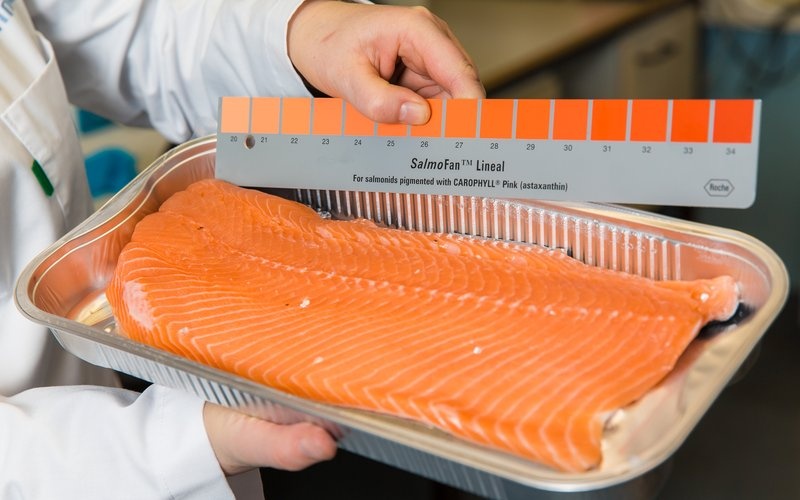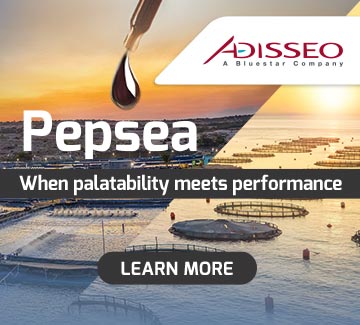
A new study suggests that natural astaxanthin extracted from the green microalga Haematococcus lacustris can match the performance of conventional synthetic pigment in colouring the flesh of Atlantic salmon, offering a potential alternative for producers targeting premium or organic markets.
The research published in Aquaculture International, compared two algal products – a 5% astaxanthin oleoresin and a spray-dried powder – with a commercial synthetic astaxanthin source. The trial was carried out over 186 days at AquaBounty’s Rollo Bay Hatchery in Canada, using adult Atlantic salmon reared in a freshwater recirculation system. Seven diets were tested, including a control without astaxanthin and both natural and synthetic pigments at two inclusion levels (40 and 80 mg/kg).
According to the authors, “diet significantly influenced fillet pigmentation and tissue astaxanthin content, while most production parameters, biological indices, fillet proximate composition, structural parameters, and shelf life were not significantly affected.” The fish grew by an average of 1.09 kg over the trial increasing in length by 11 cm, with no diet-related differences in growth of feed performance. Mortality was also similar across treatments.
The strongest pigmentation effect was achieved with the oleoresin. The study reports that “oleoresin resulted in fillet pigmentation comparable to the synthetic product and superior to the powder product”, indicanting greater bioavailability of the pigment when delivered in an oil-based form. Visual SalmoFan™ scores and instrumental colour measurements confirmed that astaxanthin deposition was higher in fish fed the oleoresin and the synthetic pigment than in those receiving the powder or the control diet.
Astaxanthin content analysis showed that the powder consisted largely of esterified forms, whereas the oleoresin contained a higher proportion of free molecules, which may have supported its uptake.
Fillet astaxanthin concentration and retention were significantly higher in treatment containing the oleoresin and the synthetic pigment.
Despite the differences in pigmentation, the researchers observed no significant effects of pigment source on fillet proximate composition, texture, lipid oxidation, or protein degradation during 15 days of refrigerated storage. Hepatosomatic index (HSI) was the only biological parameter influenced by diet, with the highest value in fish fed the high-dose oleoresin and synthetic diets, though without broader physiological consequences.
The authors conclude that the oleoresin product “has strong potential as a natural alternative to synthetic astaxanthin in Atlantic salmon farming,” particularly as demand rises for naturally pigmented or organically certified salmon. They note that initial fish size and stocking density – rather than pigment source – were the variables most strongly linked to differences in several growth and health parameters.
Reference:
Manríquez-Hernández, J. A., Tibbetts, S. M., Fast, M. D., Goldberg, S. R., Stefanova, R., & Colombo, S. M. (2025). Effects of two natural astaxanthin products derived from the green microalga Haematococcus lacustris on production parameters and fillet quality of Atlantic salmon (Salmo salar). Aquaculture International, 33, 676. https://doi.org/10.1007/s10499-025-02257-5


